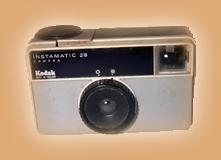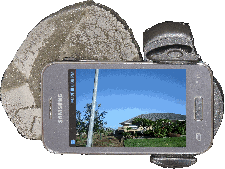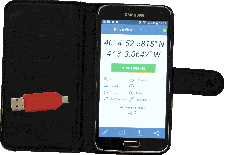About Us
Safariing
Travelling
Accommodation
Equipment & Gadgets
Souvenirs
Clothing
Safari Activities
Coastal Activities
Security
Health
Where
When
Experiences
Slideshows
Evolution
Contacts
Site Map
Sub Site
|
| | | |
Safariing is usually a once-in-a-lifetime experience (well that’s what we thought back in 1993) and so you may want to record the event for posterity.
Spotting animals is challenging enough, but if you want to get a photograph to impress your friends back home then you need to plan ahead. The simplest instamatic or mobile phone cameras are pretty much worthless for recording anything other than wide-angle landscapes, with perhaps a sunrise or sunset thrown-in for good measure.
To understand the equipment we now carry, I need to explain what we try to achieve. The most important are listed below:
To record good quality photos
Ensure the equipment functions throughout the holiday period - some lodges don't have mains power or rely on solar power to re-charge batteries
Ensure photos are backed-up - we've 'lost' a couple of memory cards over time
Travel as lightly as possible - baggage allowance on smaller aircraft is limited
To record the photo's position - a personal quirk
Follow this link to see our equipment archive page: Equipment & Gadgets - archive
|
  |
|
 |
After deliberating for some time, in 2011 Alison finally swallowed her loyalty to Canon and switched to the Nikon Coolpix P510 'bridge' camera - a much lighter combination. At the time it out-performed all the other bridge cameras available, with its' 16 mega-pixel resolution, 24-1050mm (35mm equivalent) zoom lens and full HD compliant video format. It took a little getting used to, particularly focusing under challenging conditions, such as capturing Dik-dik in the undergrowth - the manual focus takes a lot to master.
After a couple of quick tests I decided the built-in GPS function was never going to be viable as many 'fixes' were up to 1 Km from the actual location & it seriously drained the battery.
|
I also succumbed a couple of years later and chose the Nikon Coolpix P600 camera - a later model than Alison's with a slightly wider angle zoom lens. My primary reason was more to do with astronomical photography than safaris, although it reduced our hand-baggage weight significantly.
|
 |
 |
After a couple of holidays when we forgot to take photos of the landscapes we were passing through (train and car journeys in Australia) I decided to use an old Samsung Galaxy Young 2 phone Alison was no longer using with a suction bracket, foam cone (to stop reflections) and the 'Photo Lapse to Cloud' App to automatically capture images every 30 secs or so for us as we travelled. I finally settled on this App because it allows: the maximum camera resolution to be used; time lapse interval to be set; start and stop periods to be selected. I also use this to record our tracks using 'GPSLogger'. When used for extended times I plug a powerbank in to extend the battery life.
Suprisingly many of the photos end up with slanting objects (see lamppost in the camera's image) when travelling at speed with close objects, although distant objects are fine. This suggests the camera captures the images line-by-line, reminiscent of TV cameras.
I expect to discard c. 90%+ of these time-lapse photos.
|
|
Having developed my own slideshow application (see Slideshows) I wanted to carry them around and play them even without an internet connection and if possible display them on a smart TV screen. So I opted to replace my tablet with the Samsung Galaxy S5 smart phone, but this has subsequently been superceded by a Samsung Galaxy S10 smart phone.
|
 |
I continue to use:
'ES File Explorer' to navigate the file system, which also has its own image viewer with slideshow function thrown in for free
'GPS Test' and 'GPSLogger' to take advantage of the built-in GPS unit - tests showed this up-to-date chipset performed as well as my older Pretec logger without the need for an external aerial and didn't drain the battery anywhere near as much as the (defunct) GPS unit provided with the Nikon camera.
Kindle reader so I no longer need to carry my Kindle either
'Google Earth', 'Google Maps', 'Geo Tracker' and 'MAPS.ME' to display GPS KML tracks - GPSLogger can export KML files directly. 'GE' needs WiFi to function, but worth downloading for when it is available. The Android version doesn't have the sidebar and the resolution isn't as good as the PC version - but perfectly adequate for a convenient portable device. As long as suitable maps are downloaded before you travel the other Apps happily work off-line.
'Night Sky Tools' to identify all those bright stars we constantly see at the Equator. Using the GPS location, built-in compass and Gyro sensors it shows what is in the sky at the moment. This has rekindled my interest in astronomy - probably the next hobby to take up - we've already bought a telescope!
I've downloaded a lot of music files, so I can now listen to my favourite tracks while swinging in my hammock on the beach, reading my latest book with a cool refreshing beer:)
On returning home I also downloaded some games - Chess, Seduko and Solitaire, so I can take my mind off work and relax a bit at lunchtime.
The phone is also used to:
Back-up our photos, using an OTG-USB card reader - replacing the tablet and previously laptop
Occasionally take photos - usually in group activities when I don't have my camera with me
|
|
Accessories
- Of course the longer the shot the more difficult it is to frame and focus so you may need a rest of one form or another. Tripods are O.K. in the open with plenty of space, but are impractical in a crowded mini-bus or 4-wheel drive. Monopods aren't much better and only provide a single support point. Beanbags are probably the best as they can be moulded to the available support - window frame or sun-roof. Blow-up bags, although less stable also help and reduce packing, especially if you use the free-issue neck supports often handed out on international airlines.
- Don’t forget to take a lot of memory cards (previously film), as if available at lodges they will be expensive. I tend to use 4 or 8 Gbyte cards, rather than larger cards so the risk of losing everything is reduced. Alison has been known to use a whole film for a single pride of lions!
- In these digital days of course you may wish to carry a backup device to download your images daily and recycle the memory cards. You obviously have to balance the added security risk, power availability and baggage. In the early days we carried a sub-notebook laptop - but I've migrated to a mobile phone now - see above.
- We now carry high capacity powerbanks and USB chargers for all our devices: mobile phones; cameras, which can provide 5 days or more operation without mains power. Note, airport security may limit the size of powerbanks to under 20,000mAh to reduce the risk of fires on board. I had one confiscated in Bangkok because the capacity was not listed on the product label.
Reminders
- Be aware not all lodges provide readily available power sockets to recharge your batteries - check with your operator beforehand!
- In a safari bus you may have 6 or 7 people all trying to manoeuvre to get the best shot of the same animal. You obviously have to be patient and considerate (otherwise sparks will fly before the end of your once-in-a-lifetime safari)!
- Be wary of taking photographs of the locals, especially in the countryside. Some cultures believe a photograph somehow steals their soul. You should ask permission beforehand, otherwise you could face a confrontation. One of our friends was asked to hand over her videotape when she took a pan around the hotel lobby and caught a local woman in the shot. In the end she settled for it to be erased.
- Video cameras have to be declared at customs on entering the country and an additional fee must be paid in many of the parks for videoing.
- Drones are forbidden in most safari parks as they disturb the animals.
- One of the biggest problems with getting the very best award winning shot is your fellow traveller. The old hard-of-hearing or excitable young woman or child will jump up at the first siting extolling their luck at seeing such a rare animal at the top of their voice, only to startle it. All you’ll get then is a shot of their rump as they disappear into the bush. So a quiet word with your party on the first evening pointing out good ‘safari etiquette’ may (but unlikely) afford you some better shots.
|
|





